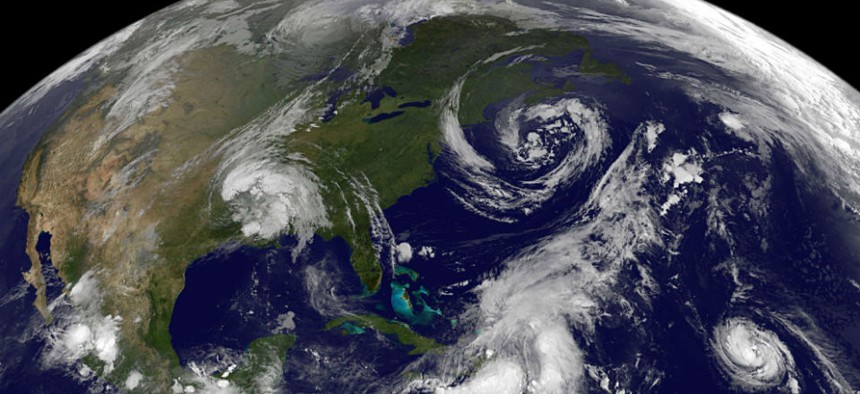Satellite Rescue Network Gets Space Technology Hall of Fame Recognition

NOAA satellites can help predict the weather but in conjunction with COSPAS-SARSAT can also save lives on search and rescue missions. NOAA/AP
Last year, the multinational COSPAS-SARSAT program saved 253 people.
Since 1982, 37,000 people, including 7,000 Americans, survived potentially disastrous incidents because of the COSPAS-SARSAT rescue network. That record earned the satellite system an induction into the Space Technology Hall of Fame today.
The honor recognizes technologies originally developed for space applications that ultimately improve live on Earth, and few technologies rival COSPAS-SARSAT in life-preserving metrics.
In 2013 alone, COSPAS-SARSAT’s network of satellites that detect and locate distress signals from emergency beacons led to the rescue of 253 people from potentially deadly situations. The network involves numerous satellites, including the National Oceanic and Atmospheric Administration’s geostationary and polar-orbiting satellites. Altogether the program comprises 43 countries and organizations.
“The technology on NOAA satellites is not just for gathering environmental intelligence and weather forecasting, it also saves lives thanks to our role with COSPAS-SARSAT,” said Mary Kicza, assistant administrator for NOAA’s Satellite and Information Service.
The United States, Canada, France and the Soviet Union teamed up together in 1979 to for COSPAS-SARSAT. Notably, the project was able to survive political divisiveness during the Cold War in the 1980s to continue to grow. Hundreds of thousands of aircraft, ships and other off-terrain vehicles are now outfitted with emergency beacons that, when activated, set into motion a chain of events that ultimately ensure emergency rescues can take place.
“It is an honor for COSPAS-SARSAT to receive this prestigious distinction. It is high praise, not only for the creators of the technology and the team of scientists and technicians behind the scenes, but the brave first responders, who make the rescues,” said Chris O’Connors, program manager for NOAA SARSAT.



